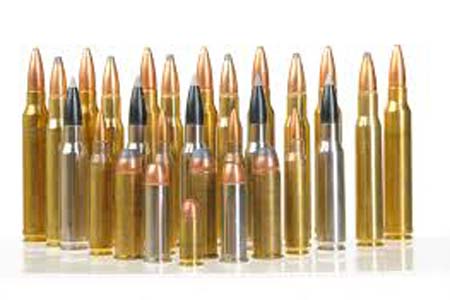- +91-8624883983
- info@insightsmicro.com
Ammunition : Trending Facts & Insights

The world’s ammunition industry develops both firearms and armaments for law enforcement and sporting purposes. The term "munitions" is used in a very broad sense, which includes all projectiles, such as bullets and shells, that are used for military, hunting, and recreational shooting purposes. The market has seen steady expansion given the robust defense expenditures, intense economics between countries, and the growing interest in other tricks involving shooting as a sport.
For the year 2024, world ammunition markets are expected to be worth about twenty-five point one billion US dollars at a compound annual growth rate (CAGR) of three point five percent from 2024 to 2030. The market is expected to grow due to military improvement programs, the introduction of new items for law enforcement, and the increasing willingness of the general public to purchase weapons for personal security and sports.
Ammunition Industry
Overview
The world’s ammunition industry develops both firearms and armaments for law enforcement and sporting purposes. The term "munitions" is used in a very broad sense, which includes all projectiles, such as bullets and shells, that are used for military, hunting, and recreational shooting purposes. The market has seen steady expansion given the robust defense expenditures, intense economics between countries, and the growing interest in other tricks involving shooting as a sport.
For the year 2024, world ammunition markets are expected to be worth about twenty-five point one billion US dollars at a compound annual growth rate (CAGR) of three point five percent from 2024 to 2030. The market is expected to grow due to military improvement programs, the introduction of new items for law enforcement, and the increasing willingness of the general public to purchase weapons for personal security and sports.

Types & Definition
The ammunition industry deals with the manufacturing, distribution, and sale of equipment in the form of projectiles and materials used within the launchers. Everything is small-caliber, comprising weapons like semiautomatic cushareloaders and rifles all the way up to electromagnetic sources warheads, which include the likes of missiles and artillery shells.
Differentiating the ammunition market into different segments depends on factors such as caliber, reason, and makeup.
By size and caliber:
Small-Caliber Rounds: It issed in handguns, rifled guns, as well as shotguns (for instance,, 9 mm, .22 LRR, 5.56 mm, .308 Winchester)..
Medium-Caliber Rounds: ammunitionhat is used by machine guns and automatic weapons (i.e.,., 20 mm, 30 mm)
Large-Caliber Rounds: shellshat different artillery, tank guns, and other naval artillery use (e.g.,., 105 mm,
155 mm)
By Usage:
Army and Defense: munition that is mostly used for most of the national security activities, including war
Thugs, Bangatang, Gunman, Cops, and Blitz: ammunitioned by police and other law enforcement agencies
Civil and Commercial Usage or Market: munition used for recreation such as hunting and competition as well as self-protection.
Utility & Special Indirect Use Ammunition Market: is used for purposes such as cutting and shaping down urface, etc.
Industry Trends
Militarization Drive: This is a global phenomenon with countries like America, Russia,, and China boosting inventories and manufacturing next-generation bullets.
Amendment to Non-Lethal Ammunition: Tactical units of law enforcement bodies from almost every country in the world make use of rubber bullets and bean bag rounds for crowd dispersal operations.
Challenges of Supply Chains Say
The anti-gun market faces challenges in supplying ammunition and raw materials due to internal upheaval in countries around the world, as well as war.
Three-Dimensional Ammunition Printing: Improved technology makes affordable, custom-made ammunition that encourages saving.
Facts & Insights
Smartrt Technology Weapon Ammunition: Weapons are being designed with precision-guided capabilities for enhanced efficiency.
Enhanced & Correct
CommittedYouth: There has been a notable increase in firearm and ammunition purchases in the US and several European countries.
Environmental Focus: Development policies aim to promote environmental thrusts, with a particular focus on lenses that use no lead and are safe for the environment.
Asia Pacific; merging Strong: China, India,, and Korea are raising defense spending in a big way, and as such, demand for bullets is set to rise.
Market Segment
By User:
National Security & Defense: Ammunition used by defense forces
Police & Law Enforcement: Ammunition used by law enforcement agencies
Private Practitioners and Businesses
Manufacturing and offering gun ammunition for industry purposes
By Part:
Projectile Heads
Projectile Cases
Explosives Gunpowder
Primers & Shells
By Area:
The United States and Canada represent a significant market with high civilian usage.
Western Europe is heavily reliant on the military budgets of its NATO members.
Catch Me If You Can: PID growth is recorded due to a rise in defense expenditures.
Africa and the Middle East: Combat and security issues in this region will lead to increased demand.
Utility firearms are increasing in the Caribbean as the middle and upper-class population increases.
The Dominant Firms of the Ammunition Sector
10 Big Ammunition Companies: Worldanking
Industry Leader
1. US: Northroprumman Corporation
2. U.S.A.: General Dynamics Corporation
3. UK: BAEystems
4. U.S.A. : Raytheon Technologies
5. France: Thales Group
6. Brazil: CBC Global Ammunition
7. Italy: Fiocchi Munizioni
8. Norway: Nammo AS
9. United States: Winchester Ammunition
10. United States: Remington Arms